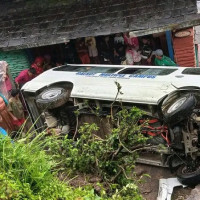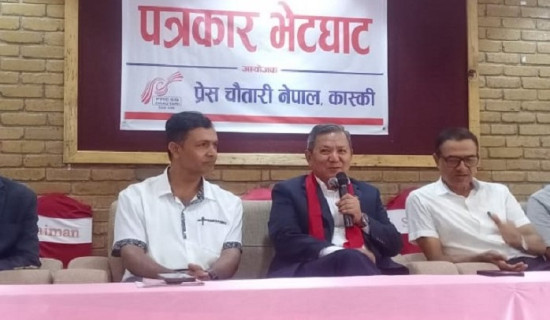- Friday, 22 August 2025
Over 19,000 tourists visit Rara
By Hari Aidi,Mugu, Aug. 22: In the last fiscal year, more than 19,447 tourists visited Rara Lake, one of Nepal’s most popular trekking destinations.
According to official statistics, a total of 19,104 domestic tourists, 77 from SAARC countries, and 276 from other foreign countries visited Rara, bringing the total number of visitors to 19,447.
Mahesh Neupane, Forest Conservation Officer at the Rara National Park Office, said that 15,191 domestic and international tourists had visited Rara during the previous fiscal year.
He informed that tourist numbers have increased significantly in the last fiscal year compared to the previous fiscal year.
Till the end of the fiscal year, 2024/25, the park collected Rs. 6,271,870 in revenue from entry fees, boat rides, and other charges.
Of this, Rs. 5,738,000 came directly from tourists, while the remaining Rs. 573,781 was collected from fines, penalties, timber, and other sources, said Neupane.
As per the guidelines of the Rara National Park Office, domestic tourists are charged Rs.100 per person for entry, visitors from SAARC countries pay Rs. 1,500 each, and tourists from outside the SAARC region are charged Rs. 3,000 per person.
Boat rides are available at Rs. 500 per person, with 20 per cent of the fee going to the park office, and 40 per cent each to the boat operators and the local Area Development Committee.
The favourable months for trekking and visiting Rara are March-April and September-October.
Most domestic tourists visiting Rara travel by road.
Expressing his concern, Saroj Bhandari, a visitor from Gandaki Province, said that poor road conditions make travel difficult, especially during rainy seasons when paths become muddy during the monsoon and dusty during the dry season.
Meanwhile, the Rara National Park Office has suggested that a museum should be established in the area to educate tourists and visiting students.
Spanning an area of 10.8 square kilometres, Rara Lake stretches from Mugu to Jumla.
The lake’s natural beauty, climate, the surrounding Chhayanath Mountain, Himalayan wildlife, and diverse cultural heritage make it a popular destination for both domestic and foreign tourists.



-(1)-original-thumb.jpg)












